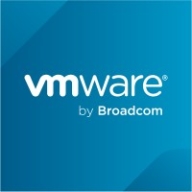

IBM Disaster Recovery Services and VMware Live Recovery are tools in data protection and recovery. VMware Live Recovery is often viewed favorably for its advanced capabilities and features.
Features: IBM Disaster Recovery Services offers a comprehensive backup and recovery system, automated testing features, and cost-effectiveness. VMware Live Recovery provides real-time recovery solutions, seamless integration with virtualization environments, and enhanced data protection capabilities, setting it apart with its integration and instant recovery capabilities.
Ease of Deployment and Customer Service: VMware Live Recovery benefits from an easy installation process and a responsive support team. IBM Disaster Recovery Services involves a more complex setup but offers dependable customer service to assist with problem-solving. These differences highlight deployment ease and support engagement.
Pricing and ROI: IBM Disaster Recovery Services is considered cost-effective with a fair initial setup cost and strong ROI, appealing to budget-conscious businesses. VMware Live Recovery requires a higher upfront investment, yet users find its features to be a valuable investment, delivering a positive ROI over time. The primary distinction is the higher initial cost versus the comprehensive value offered by VMware's advanced features.
| Product | Market Share (%) |
|---|---|
| VMware Live Recovery | 16.3% |
| IBM Disaster Recovery Services | 2.8% |
| Other | 80.9% |


| Company Size | Count |
|---|---|
| Small Business | 36 |
| Midsize Enterprise | 12 |
| Large Enterprise | 39 |
We monitor all Disaster Recovery as a Service reviews to prevent fraudulent reviews and keep review quality high. We do not post reviews by company employees or direct competitors. We validate each review for authenticity via cross-reference with LinkedIn, and personal follow-up with the reviewer when necessary.